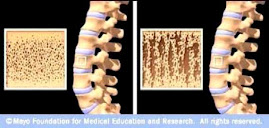I came across
an excellent review on the impact of treatments for postmenopausal osteoporosis
on bone quality. The review covers teriparatide (Forteo), bisphosphonates,
strontium ranelate, and denosumab (Prolia). Since strontium is the active
ingredient in strontium ranelate, I think it’s safe to assume the same positive
changes in bone quality occur with strontium citrate.
“The objective of this systematic
review was to examine the influence of treatments for postmenopausal
osteoporosis (parathyroid hormone [PTH], bisphosphonates, strontium ranelate,
and denosumab) on bone quality and discuss the clinical implications.”
“Most bone-quality data for PTH is
from teriparatide. Teriparatide results in a rapid increase in bone-formation
markers, followed by increases in bone-resorption markers, opening an “anabolic
window,” a period of time when PTH is maximally anabolic. Teriparatide reverses
the structural damage seen in osteoporosis and restores the structure of
trabecular bone. It has a positive effect on cortical bone, and any early
increases in cortical porosity appear to be offset by increases in cortical
thickness and diameter.”
“Bisphosphonates are antiresorptive
agents which reduce bone turnover, improve trabecular microarchitecture, and
mineralization. Concerns have been raised that the prolonged antiresorptive
action of bisphosphonates may lead to failure to repair microdamage, resulting
in microcracks and atypical fragility.”
“Strontium ranelate is thought to
have a mixed mode of action, increasing bone formation and decreasing bone
resorption. Strontium ranelate improves cortical thickness, trabecular number,
and connectivity, with no change in cortical porosity.”
“Denosumab exerts rapid, marked, and
sustained effects on bone resorption, resulting in falls in the markers of bone
turnover.”
“Evidence from bone-quality studies
suggests that treatment-naive women, aged 60–65 years, with very low BMD T
scores may benefit from PTH as primary therapy to improve bone substrate and
build bone.”
“Post-PTH treatment with
bisphosphonates will maintain improvements in bone quality and reduce the risk
of fracture.”



No comments:
Post a Comment